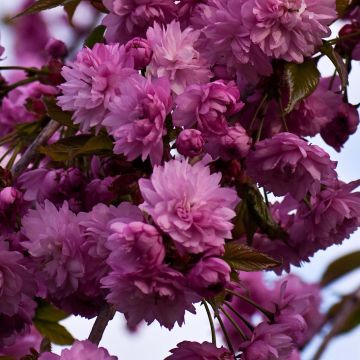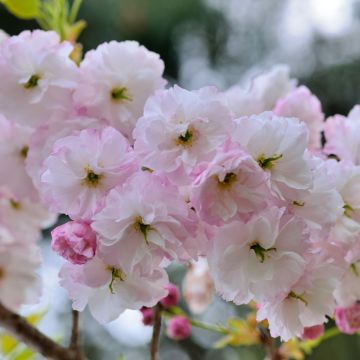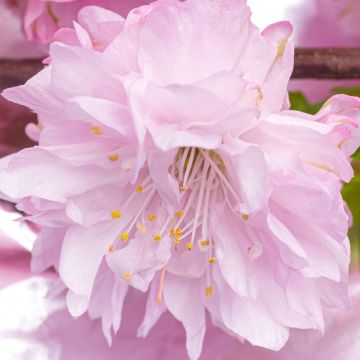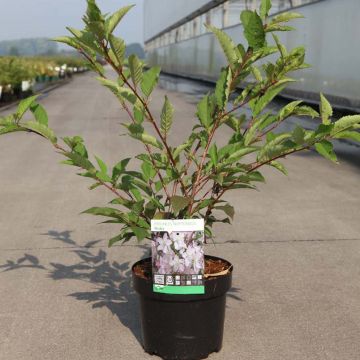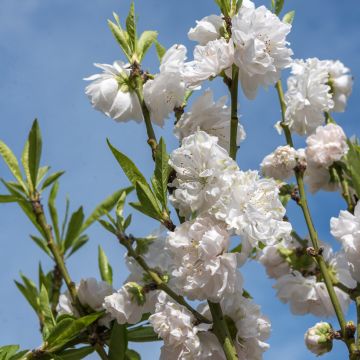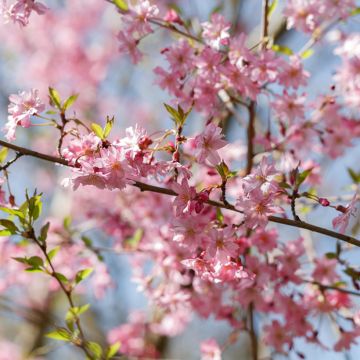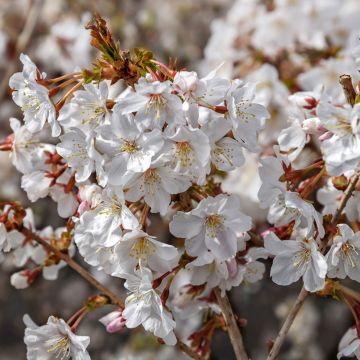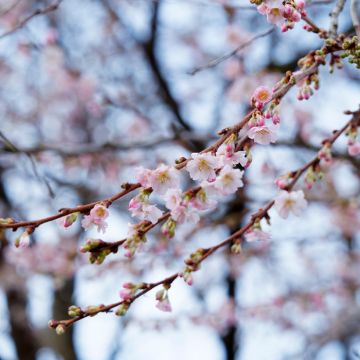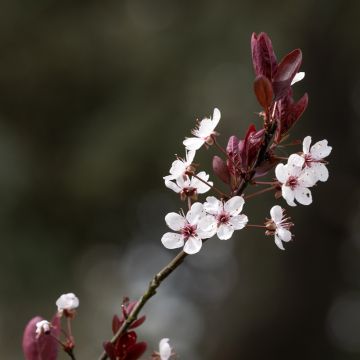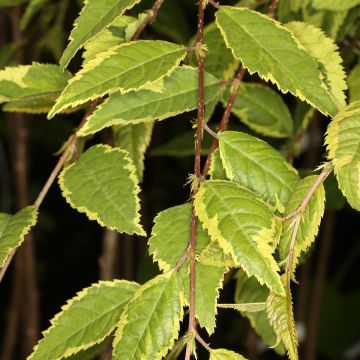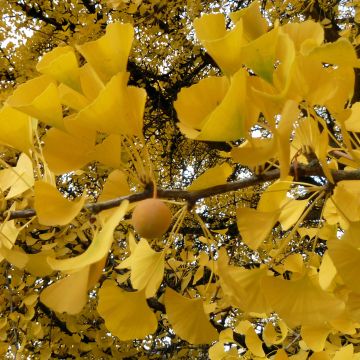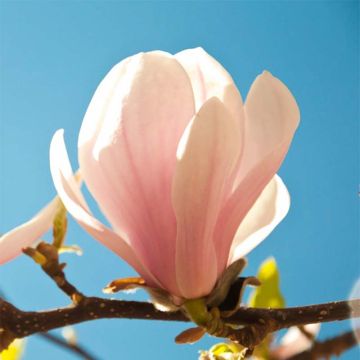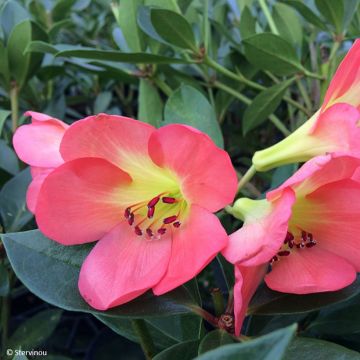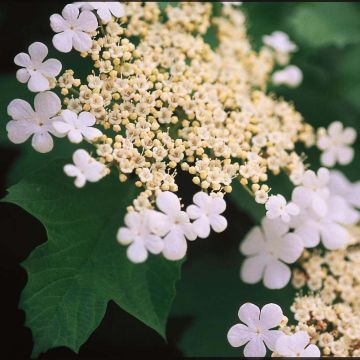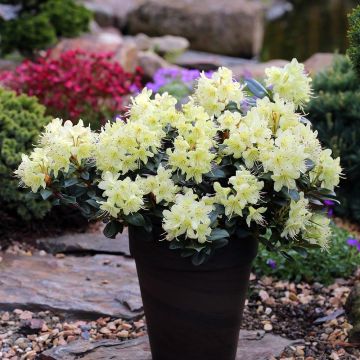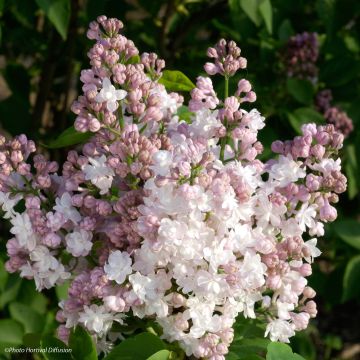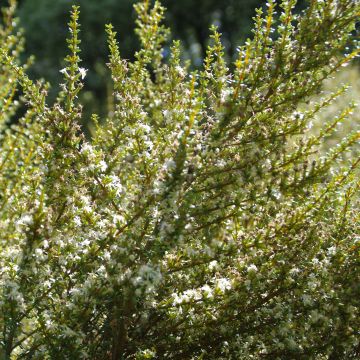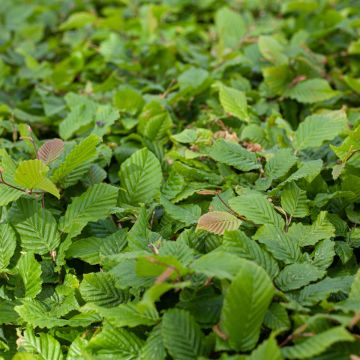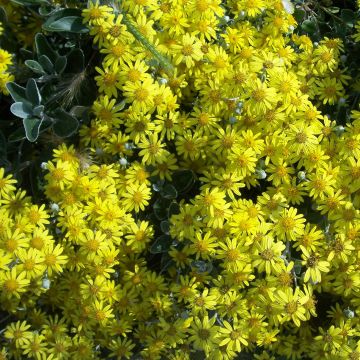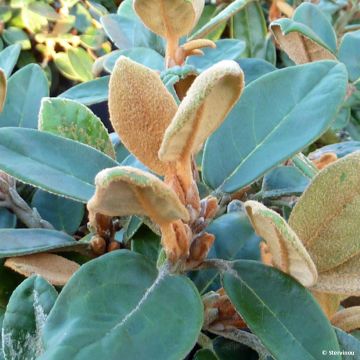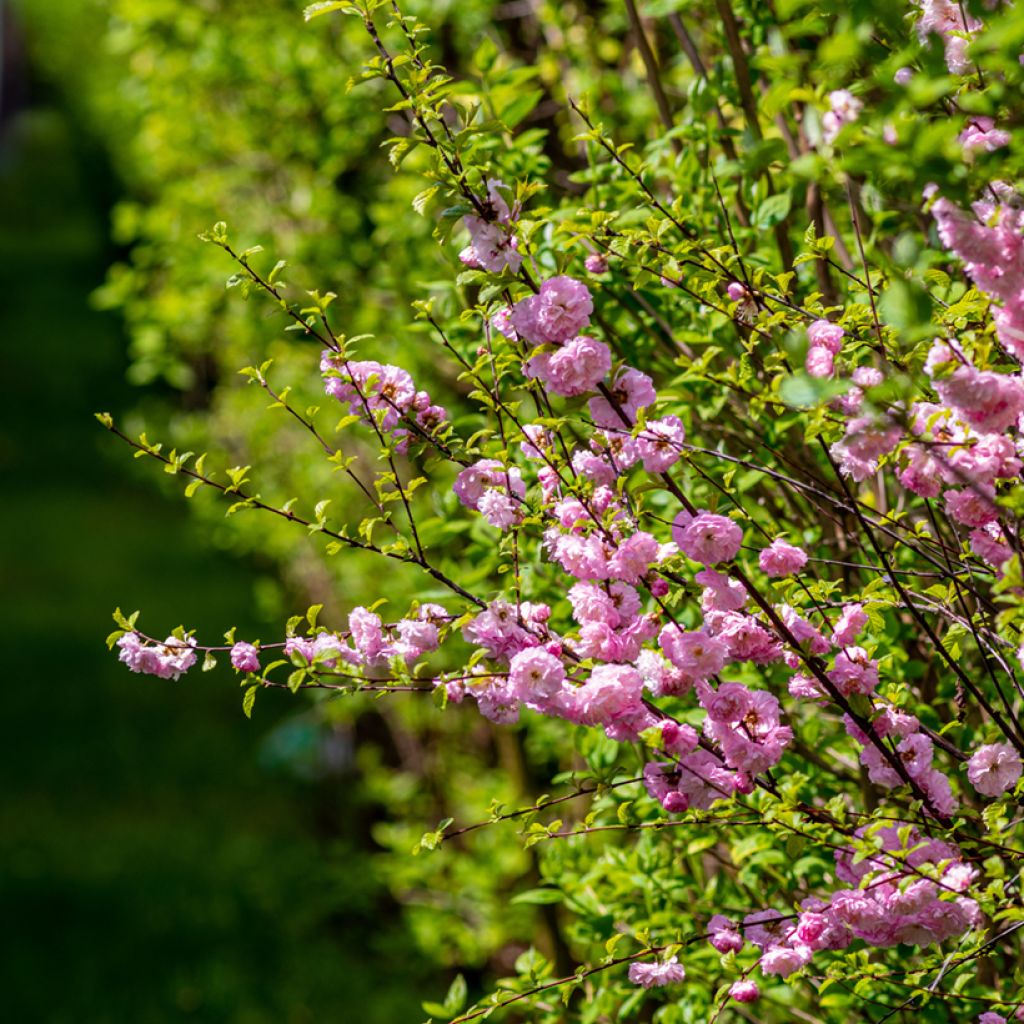

Prunus triloba - Flowering Almond
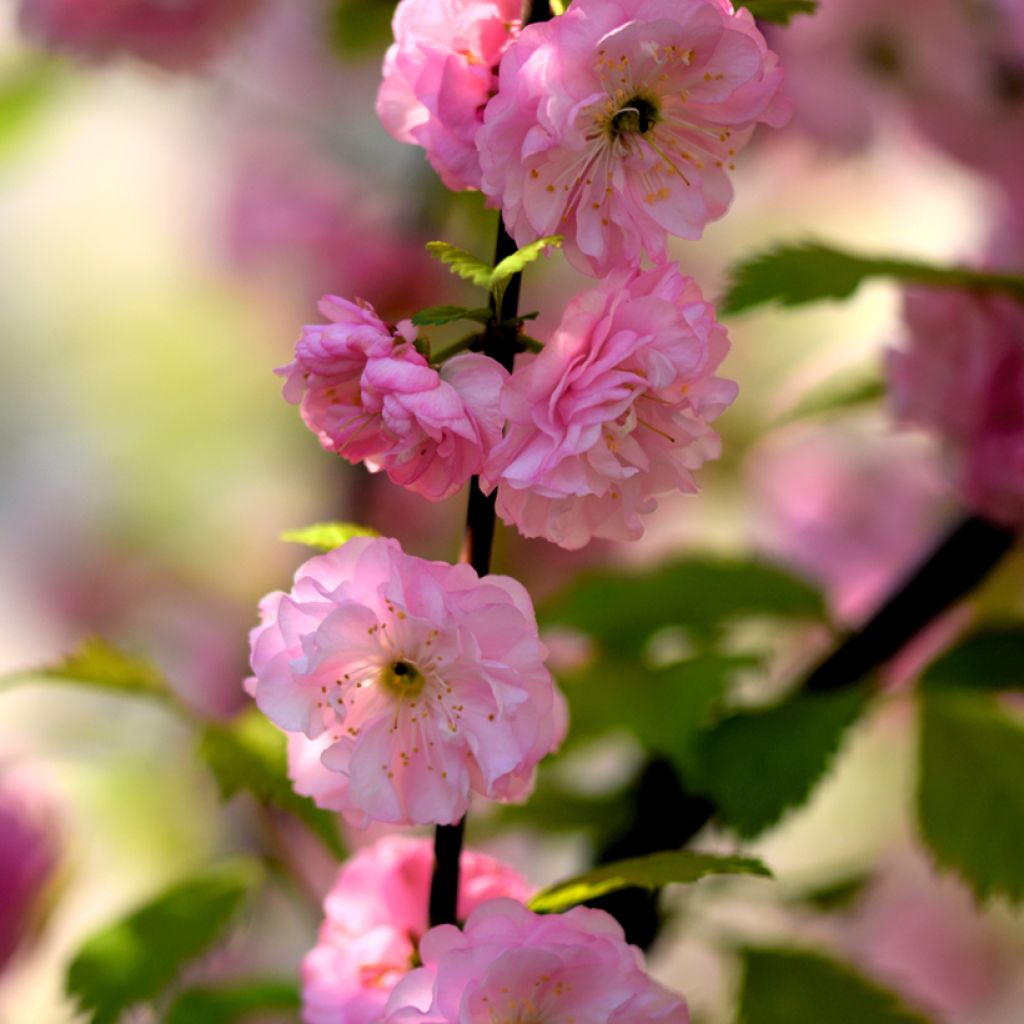

Prunus triloba - Flowering Almond
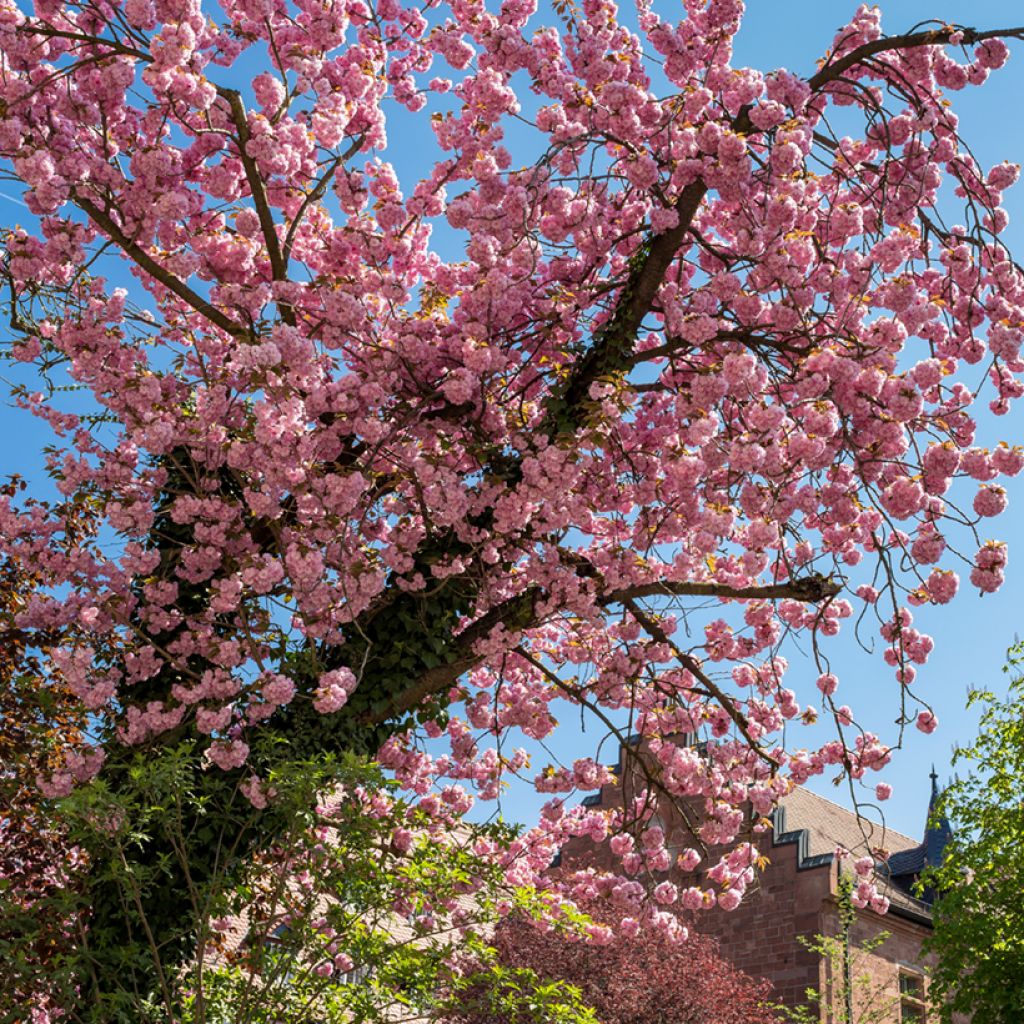

Prunus triloba - Flowering Almond
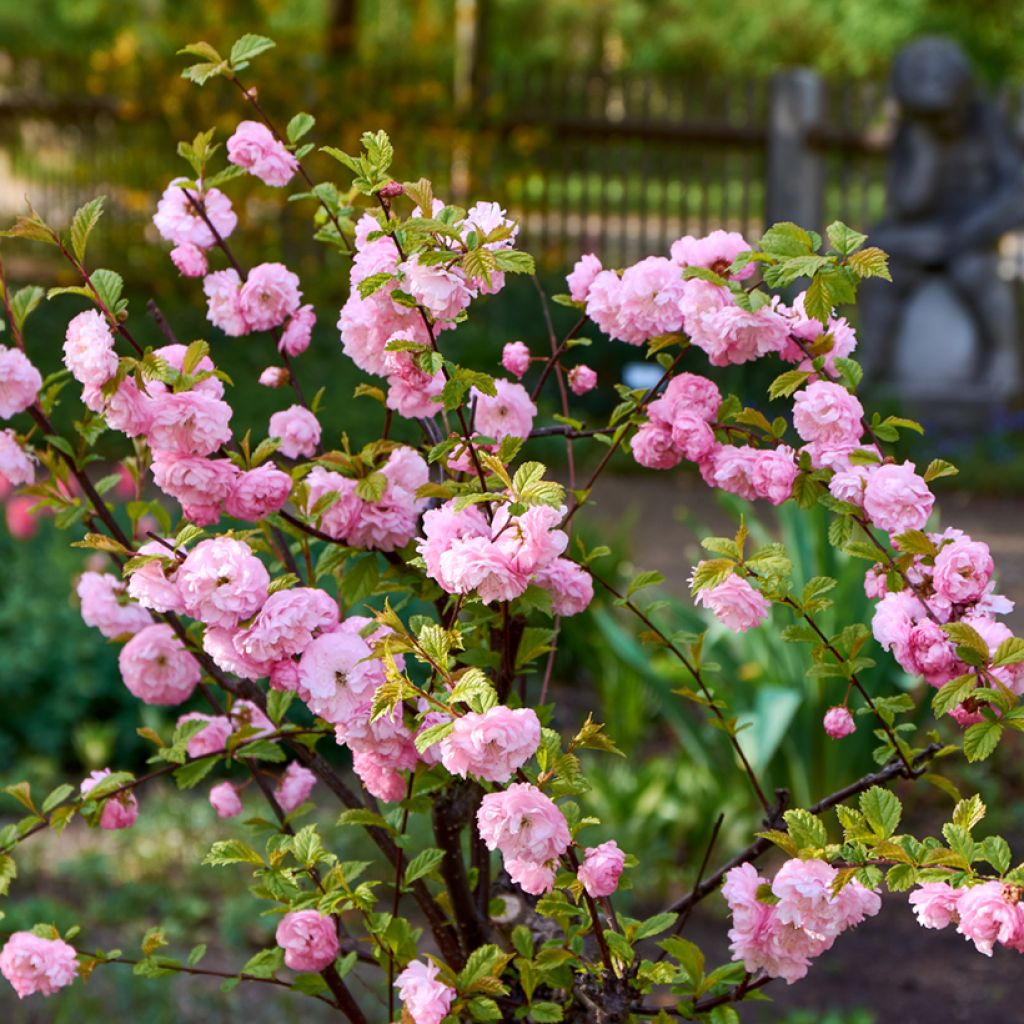

Prunus triloba - Flowering Almond
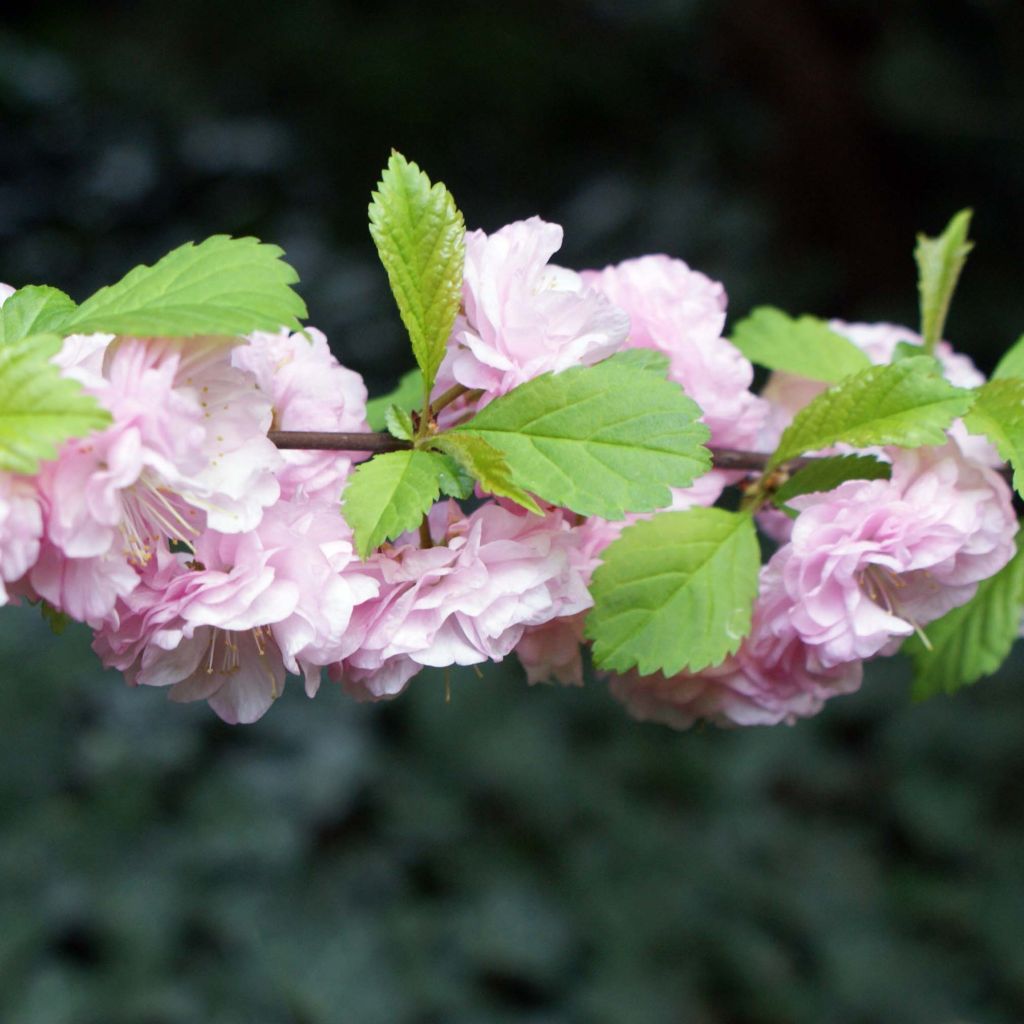

Prunus triloba - Flowering Almond
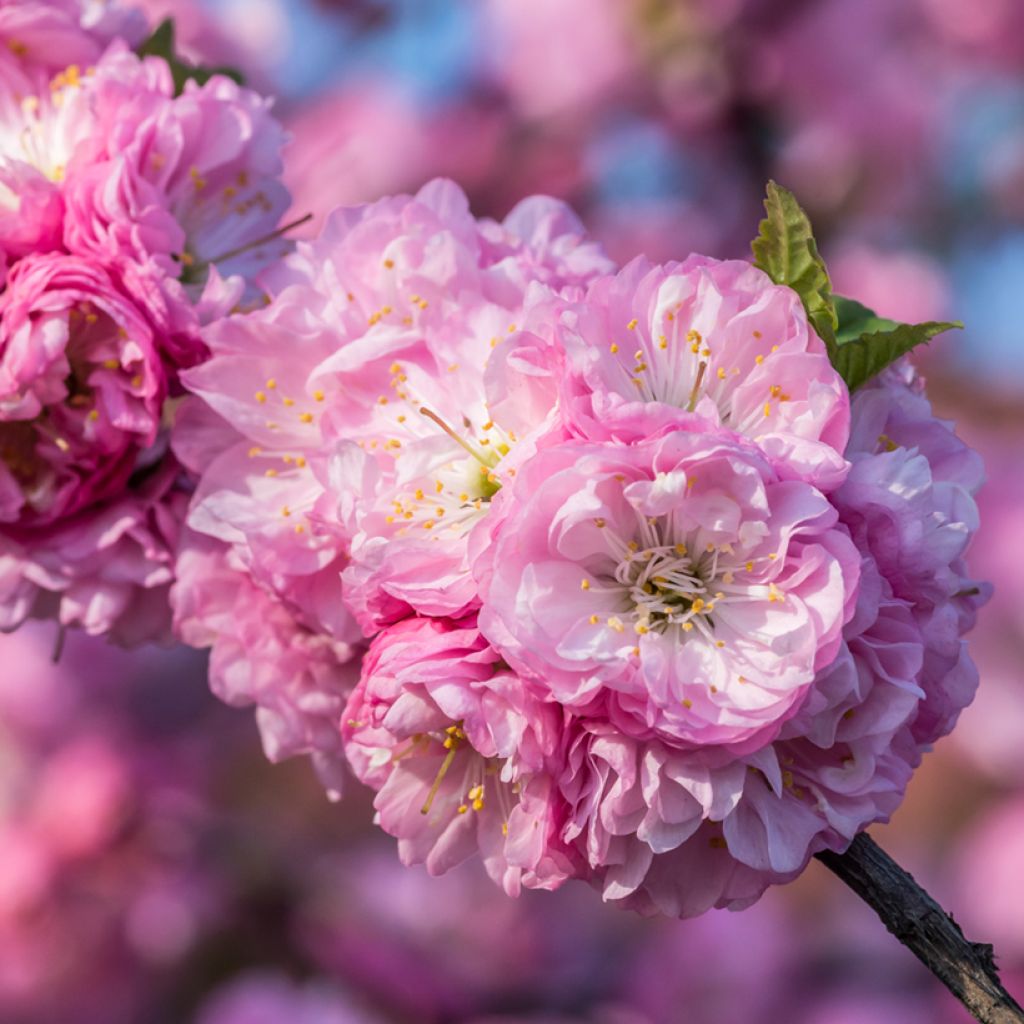

Prunus triloba - Flowering Almond
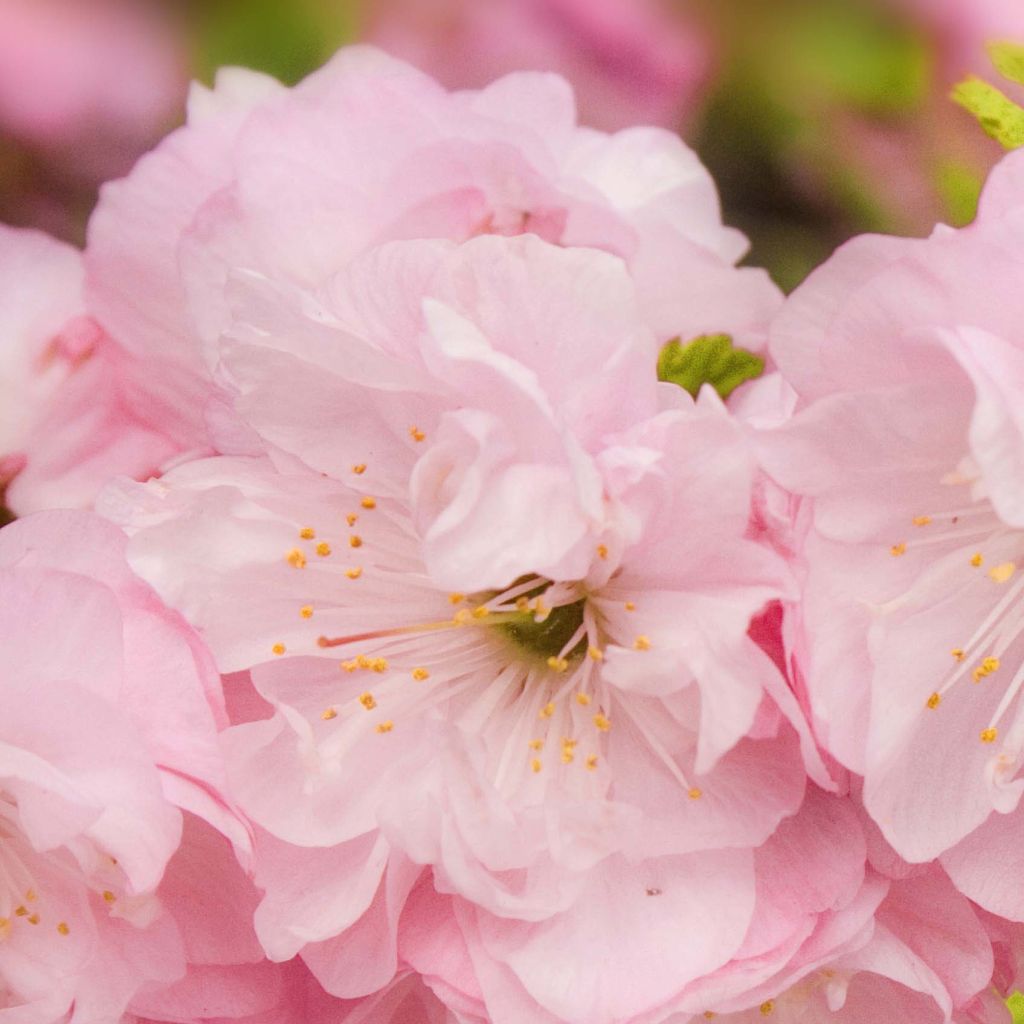

Prunus triloba - Flowering Almond
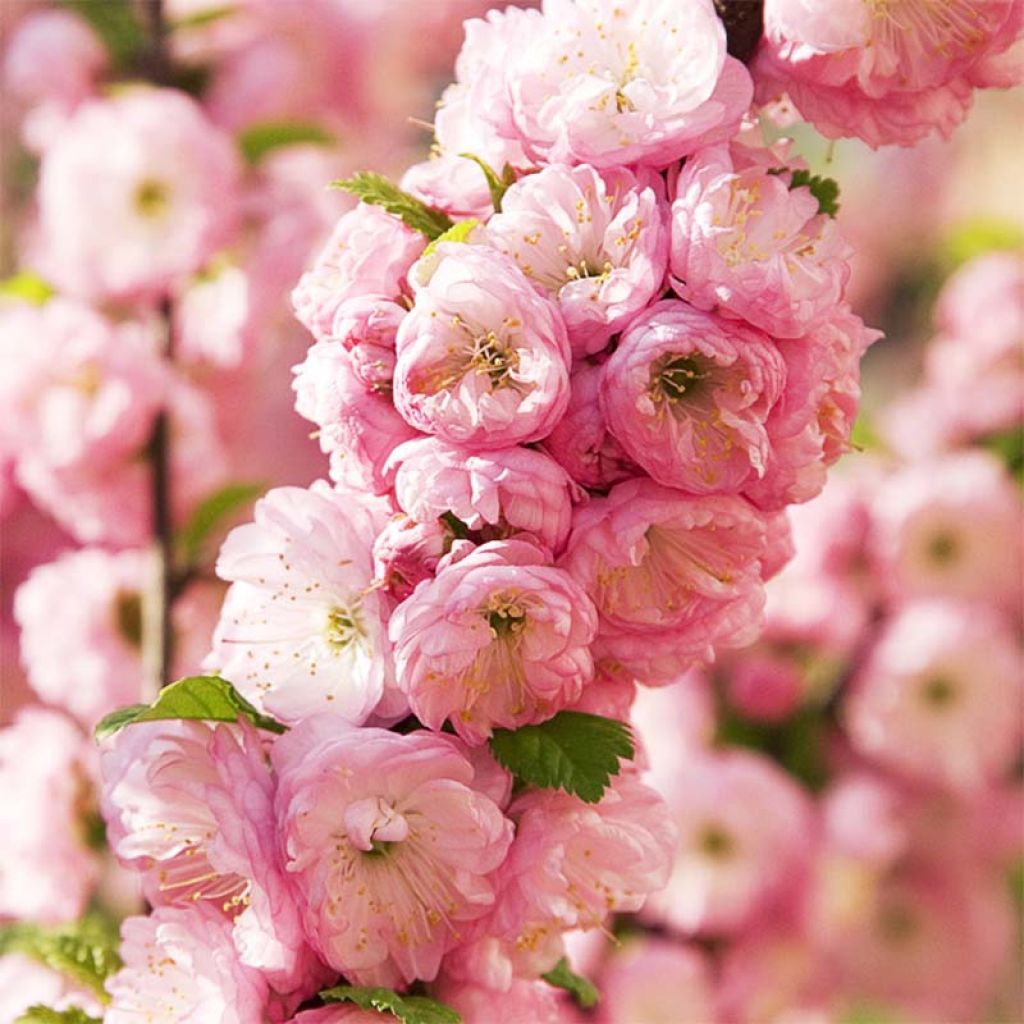

Prunus triloba - Flowering Almond
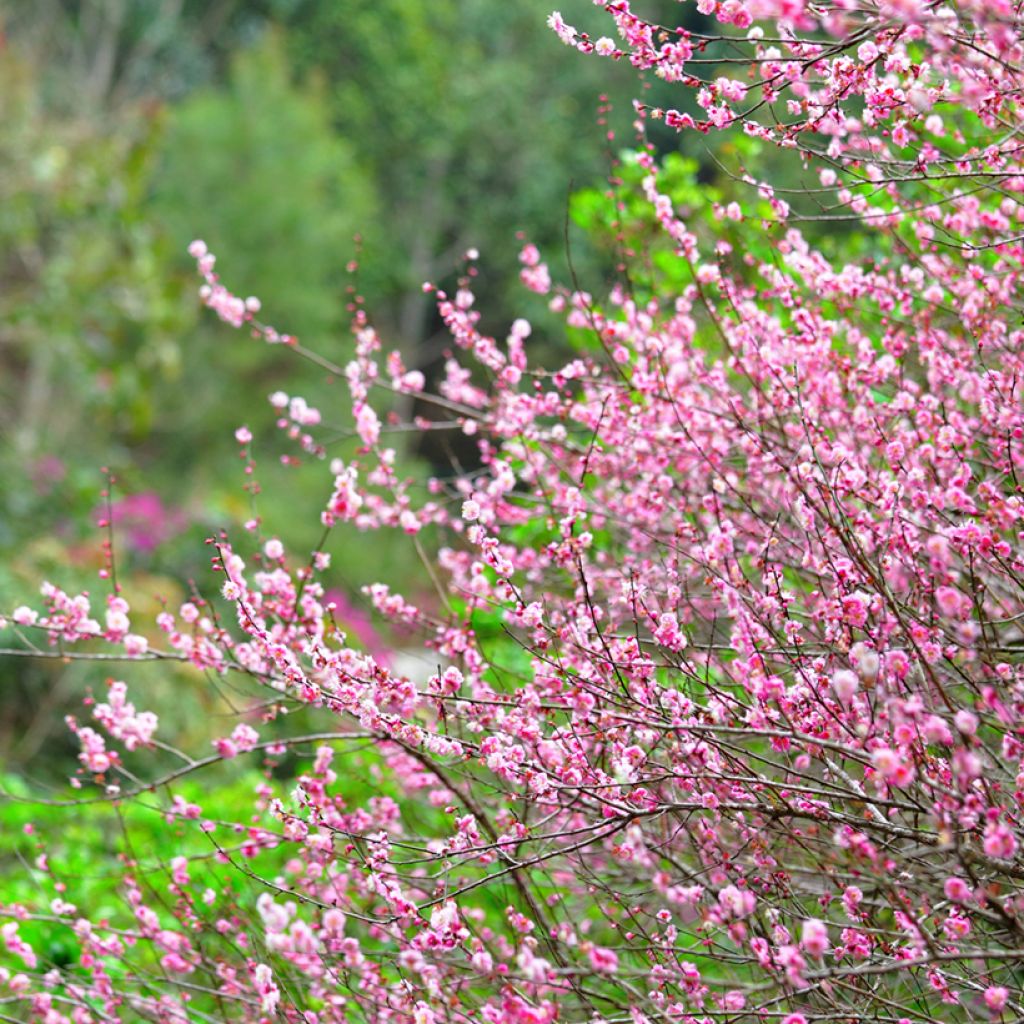

Prunus triloba - Flowering Almond
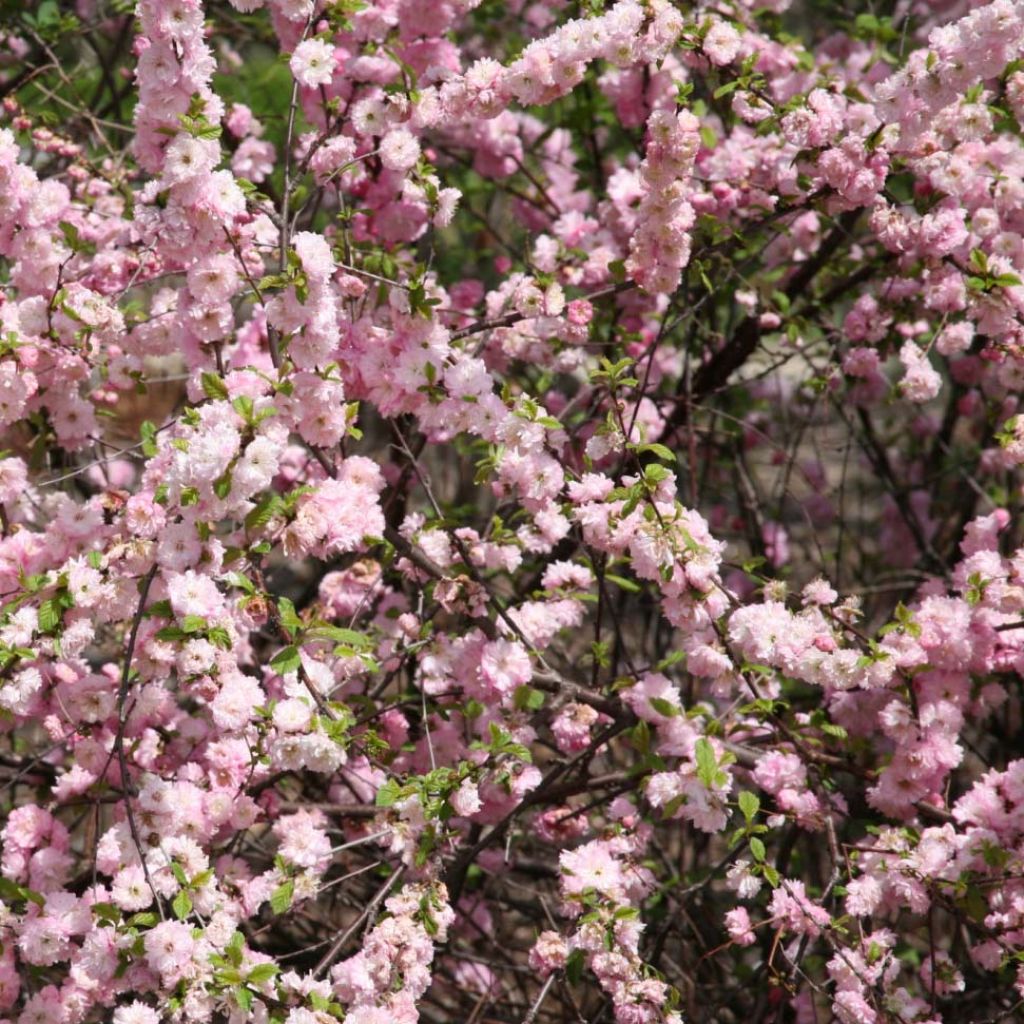

Prunus triloba - Flowering Almond
Prunus triloba - Flowering Almond
Prunus triloba
Flowering Almond, Rose Tree of China
Received the plant promptly as I was worried it might get damaged! Indeed, the handling was not very delicate (understandable since the contents of the packages are unknown), the cardboard was wet from watering (probably better than receiving a dry plant??) but fortunately not destroyed. This is my second order with you and I am still satisfied. Thank you!
Martine, 09/03/2024
This item cannot be shipped to the selected country
Delivery charge from €5.90
Delivery charge from €5.90
Delivery charge from €5.90
Delivery to Corse prohibited
More information
Schedule delivery date,
and select date in basket
This plant carries a 24 months recovery warranty
More information
We guarantee the quality of our plants for a full growing cycle, and will replace at our expense any plant that fails to recover under normal climatic and planting conditions.
From €5.90 for pickup delivery and €6.90 for home delivery
Express home delivery from €8.90.
From €5.90 for pickup delivery and €6.90 for home delivery
Express home delivery from €8.90.
From €5.90 for pickup delivery and €6.90 for home delivery
Express home delivery from €8.90.
Delivery to Corse prohibited: UE law prohibits the import of this plant from mainland France to Corse as part of the fight against Xylella fastidiosa. Please accept our sincere apologies.
More information
Does this plant fit my garden?
Set up your Plantfit profile →
Description
Prunus triloba, also known as the Wild Chinese Almond tree, is less known than its cultivar 'Multiplex' which is often preferred for its more compact growth. This beautiful deciduous bush is appreciated for its wonderful flowering in clusters of very fresh pink pompoms that evoke tiny old roses dotted along its still bare branches. In the garden, it is one of the very first to announce the arrival of spring. It suits planting in a free hedge or at the back of flower beds, accompanied by other plants that will take over from its incredible pink flowering.
Prunus triloba, also called Flowering Almond, is a small deciduous bush from the Rosaceae family, cousin of peach, cherry and apricot trees. It is native to northern China. Only the double-flowered forms of the Wild Chinese Almond are found in cultivation, more prized by gardeners. It naturally forms a ramified bush with a slightly spreading habit, but it can also be trained into a small tree with a Japanese silhouette if pruned judiciously. At maturity, it will reach about 3.5 m (11.5 ft) in height and 3 m (9.8 ft) in width. Its growth is moderately fast. Its branches are covered with a reddish-brown velvety bark. In mild climates, flowering begins in February. In cooler areas, the flowers appear in March-April, just before the appearance of the foliage. Small, pink double flowers, measuring 2 cm to 3 cm (0.8 in 1.2 in) wide, appear all along the branches that are 1 year old or older. The flowers are either solitary or borne in pairs. They are followed by the emergence of small ovate leaves with toothed edges. The leaves are bright green in colour, darker on the upper side, lighter and pubescent on the underside, taking on beautiful yellow tones in autumn. Sometimes divided into three small lobes at their tips, they are the origin of the species name triloba. This plant produces very few, non-edible, small, oval and bright red fruits.
The Chinese Almond tree deserves to be planted more in our gardens, especially since it is not demanding in terms of soil and climate. It is one of those bushes that announce the return of sunny days, like forsythias, Abeliophyllum, Japanese quinces or Japanese apricot trees (Prunus mume), with which it can be paired in a flower bed or hedge. In the garden, it can be planted at the corner of a bed covered with violets, early spring bulbs, winter heathers, forget-me-nots or hellebores for example. It will look perfect near the entrance of the house, accompanied by a Sarcococca, a single lilac and a Calycanthus that will take over from spring to summer. Its budding branches can be placed in a vase: cut a few when the buds appear; they will bloom very quickly, about a month before those on the bush.
Tip: Do not prune at the beginning of the season to fully enjoy the flowering.
Report an error about the product description
Prunus triloba - Flowering Almond in pictures
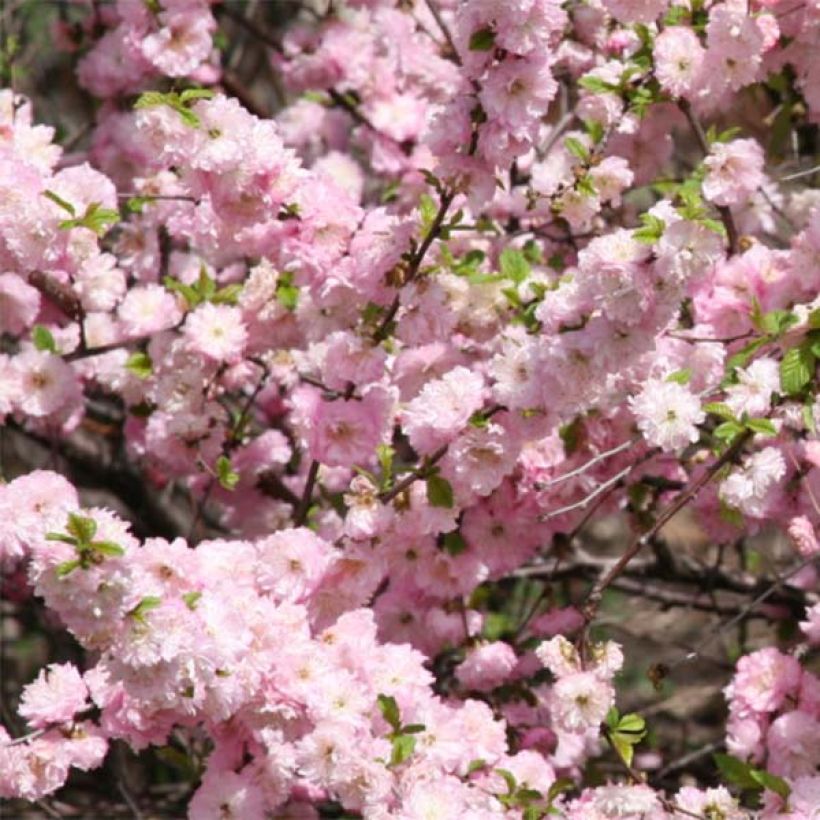

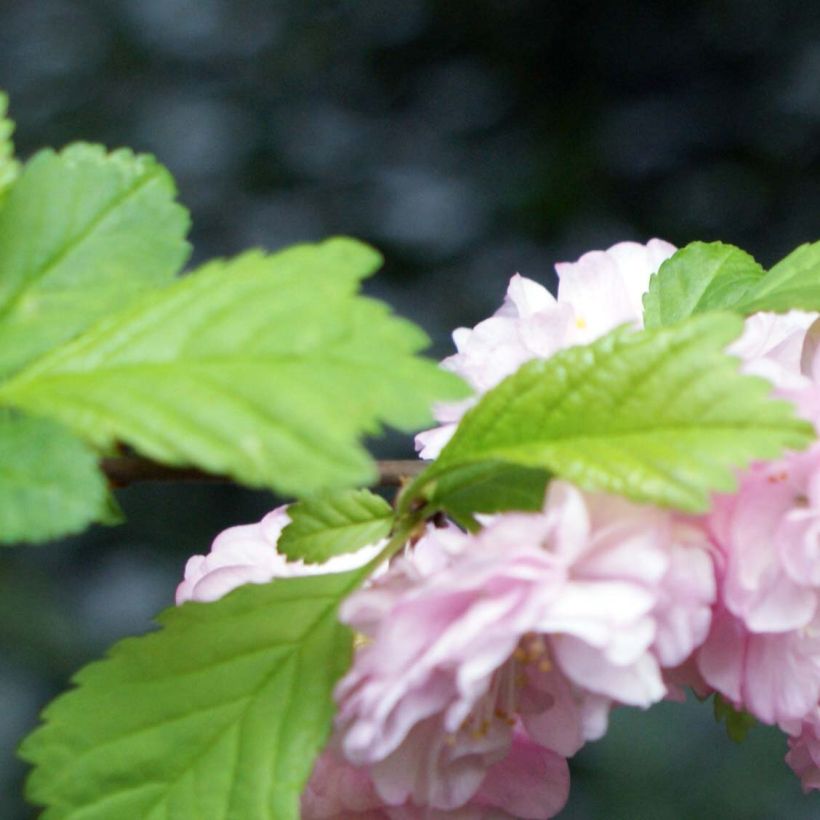

Plant habit
Flowering
Foliage
Botanical data
Prunus
triloba
Rosaceae
Flowering Almond, Rose Tree of China
China
Other Prunus
Planting and care
Plant in autumn or spring in any ordinary, deep, moist to occasionally dry in summer, soil, in full sun or in a partially shaded position. In can even tolerate limestone. To fully enjoy its flowering, choose a sheltered location away from late frosts or plant it in partial shade, which will slightly delay the development of flower buds. Also avoid icy drafts and strong winds that can damage the flowers. Prune at the end of flowering by cutting back near the base, especially for the stems that have bloomed, to keep the plant compact and produce new flowering branches. To form a Prunus triloba tree, prune the lower branches to the desired height. Also remove any branches that cross in the centre of the canopy. It is the one-year-old shoots that flower most abundantly. It can withstand temperatures as low as -15° C (5° F) and may be attacked by aphids or scale insects in summer.
Planting period
Intended location
Care
-
, onOrder confirmed
Reply from on Promesse de fleurs
Spring-flowering shrubs
Haven't found what you were looking for?
Hardiness is the lowest winter temperature a plant can endure without suffering serious damage or even dying. However, hardiness is affected by location (a sheltered area, such as a patio), protection (winter cover) and soil type (hardiness is improved by well-drained soil).

Photo Sharing Terms & Conditions
In order to encourage gardeners to interact and share their experiences, Promesse de fleurs offers various media enabling content to be uploaded onto its Site - in particular via the ‘Photo sharing’ module.
The User agrees to refrain from:
- Posting any content that is illegal, prejudicial, insulting, racist, inciteful to hatred, revisionist, contrary to public decency, that infringes on privacy or on the privacy rights of third parties, in particular the publicity rights of persons and goods, intellectual property rights, or the right to privacy.
- Submitting content on behalf of a third party;
- Impersonate the identity of a third party and/or publish any personal information about a third party;
In general, the User undertakes to refrain from any unethical behaviour.
All Content (in particular text, comments, files, images, photos, videos, creative works, etc.), which may be subject to property or intellectual property rights, image or other private rights, shall remain the property of the User, subject to the limited rights granted by the terms of the licence granted by Promesse de fleurs as stated below. Users are at liberty to publish or not to publish such Content on the Site, notably via the ‘Photo Sharing’ facility, and accept that this Content shall be made public and freely accessible, notably on the Internet.
Users further acknowledge, undertake to have ,and guarantee that they hold all necessary rights and permissions to publish such material on the Site, in particular with regard to the legislation in force pertaining to any privacy, property, intellectual property, image, or contractual rights, or rights of any other nature. By publishing such Content on the Site, Users acknowledge accepting full liability as publishers of the Content within the meaning of the law, and grant Promesse de fleurs, free of charge, an inclusive, worldwide licence for the said Content for the entire duration of its publication, including all reproduction, representation, up/downloading, displaying, performing, transmission, and storage rights.
Users also grant permission for their name to be linked to the Content and accept that this link may not always be made available.
By engaging in posting material, Users consent to their Content becoming automatically accessible on the Internet, in particular on other sites and/or blogs and/or web pages of the Promesse de fleurs site, including in particular social pages and the Promesse de fleurs catalogue.
Users may secure the removal of entrusted content free of charge by issuing a simple request via our contact form.
The flowering period indicated on our website applies to countries and regions located in USDA zone 8 (France, the United Kingdom, Ireland, the Netherlands, etc.)
It will vary according to where you live:
- In zones 9 to 10 (Italy, Spain, Greece, etc.), flowering will occur about 2 to 4 weeks earlier.
- In zones 6 to 7 (Germany, Poland, Slovenia, and lower mountainous regions), flowering will be delayed by 2 to 3 weeks.
- In zone 5 (Central Europe, Scandinavia), blooming will be delayed by 3 to 5 weeks.
In temperate climates, pruning of spring-flowering shrubs (forsythia, spireas, etc.) should be done just after flowering.
Pruning of summer-flowering shrubs (Indian Lilac, Perovskia, etc.) can be done in winter or spring.
In cold regions as well as with frost-sensitive plants, avoid pruning too early when severe frosts may still occur.
The planting period indicated on our website applies to countries and regions located in USDA zone 8 (France, United Kingdom, Ireland, Netherlands).
It will vary according to where you live:
- In Mediterranean zones (Marseille, Madrid, Milan, etc.), autumn and winter are the best planting periods.
- In continental zones (Strasbourg, Munich, Vienna, etc.), delay planting by 2 to 3 weeks in spring and bring it forward by 2 to 4 weeks in autumn.
- In mountainous regions (the Alps, Pyrenees, Carpathians, etc.), it is best to plant in late spring (May-June) or late summer (August-September).
The harvesting period indicated on our website applies to countries and regions in USDA zone 8 (France, England, Ireland, the Netherlands).
In colder areas (Scandinavia, Poland, Austria...) fruit and vegetable harvests are likely to be delayed by 3-4 weeks.
In warmer areas (Italy, Spain, Greece, etc.), harvesting will probably take place earlier, depending on weather conditions.
The sowing periods indicated on our website apply to countries and regions within USDA Zone 8 (France, UK, Ireland, Netherlands).
In colder areas (Scandinavia, Poland, Austria...), delay any outdoor sowing by 3-4 weeks, or sow under glass.
In warmer climes (Italy, Spain, Greece, etc.), bring outdoor sowing forward by a few weeks.

































